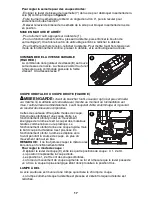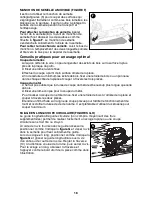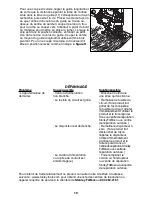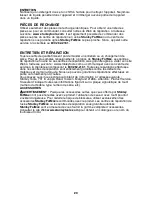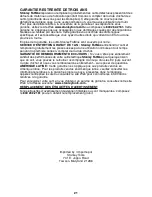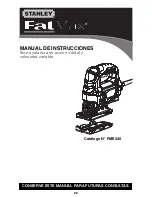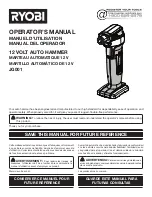
7
Hints for optimum use
Sawing laminates
WARNING:
As the saw blade cuts on the upward stroke, splintering may occur on
the surface closest to the shoe plate.
- Use a fine-tooth saw blade.
- Saw from the back surface of the workpiece.
- To minimize splintering, clamp a piece of scrap wood or hardboard to both sides of the
workpiece and saw through this sandwich.
Sawing metal
- Be aware that sawing metal takes much more time than sawing wood.
- Use a saw blade suitable for sawing metal.
- When cutting thin metal, clamp a piece of scrap wood to the back surface of the
workpiece and cut through this sandwich.
- Spread a film of oil along the intended line of cut for easier operation and longer blade
life. For cutting aluminum, kerosene is preferred.
RIP / CIRCLE CUTTING (FIGURE G, H)
Ripping and circle cutting without a pencil line are
easily done with the rip fence / circle guide (not
included - available at extra cost).
Using the screw supplied with the accessory guide,
position as shown in
figure G
and thread the screw
into the shoe to clamp the fence securely.
When ripping, position as shown in
figure G
and slide
the rip fence under the screw from either side of the
saw. Set the cross bar (10) at desired distance from
blade and tighten screw. For ripping, the cross bar
should be down and against the straight edge of the
workpiece as shown.
When circle cutting, adjust rip fence so that distance
from blade to hole in fence arm (11) is at the desired
radius and tighten screw. Place saw so that hole in
fence arm is over center of circle to be cut (drill hole
for blade or cut inward from edge of material to get
blade into position). When saw is properly positioned,
drive a small nail through hole in fence arm. Using rip
fence as a pivot arm, begin cutting circle. For circle
cutting, the cross bar should be up, as shown in
figure H
.
G
H

















